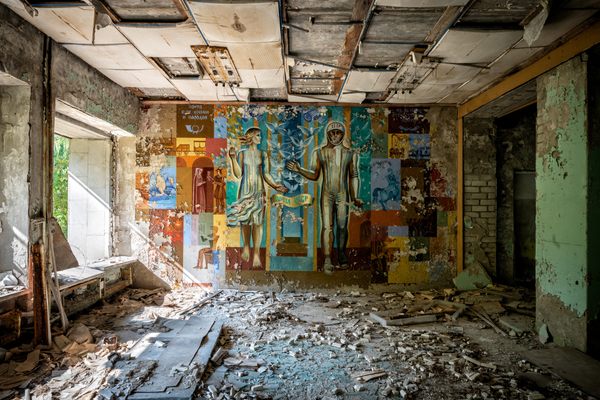Objects of Intrigue: Look Radiant in Radium
Musée Curie in Paris (all photographs by the author unless indicated)
With all that we know about radioactivity, it can be surprising to come upon a display of radium cosmetics in the Musée Curie in Paris. The small museum in the 5th Arrondissement centers on Marie Curie’s laboratory and office which she used from 1914 to 1934, but also explores the wider influence of Marie Curie, her husband Pierre, and daughter and son-in-law Irène and Frédéric Joliot-Curie on medicine, and even beauty.
Radium cosmetics
The alluring glow of radium was transfixing. Before the dangers of radiation were thoroughly exposed through tragedies like the Radium Girls, who were poisoned applying the supposedly harmless radium to glow-in-the-dark to watches, small amounts of radium were considered good for your health. Radium had only been discovered by the Curies in 1898, but its possibilities for self-improvement were already too alluring for advertisers to pass up.
The most infamous was Tho-Radia, a French line of face creams and other cosmetics. Its icon was a blonde woman’s faced starkly illuminated from below by what looks like the flash of an x-ray. It also stated it was developed by a Dr. Alfred Curie — no relation to the famed scientists, but useful in misleading customers. Many cosmetics and other household products from cleaning solutions to children’s toys also purported to contain radium, although often it was merely all talk to jump on to the Atomic Age craze. However, Tho-Radia was indeed radioactive. For every 100 g of the face cream it reportedly had 0.5 g of thorium chloride and 0.25 mg of radium bromide.
Ad for Tho-Radia (via musee.curie.fr)
As Matthew Lavine wrote in The First Atomic Age: Scientists, Radiations, and the American Public, 1895-1945: “The connection [of radium] to physical appearance made the elision to its cosmetic use an easy one, since the care of one’s skin was a matter of hygiene as well as aesthetics, and both thus fell within radium’s ‘marvelous powers for betterment of the skin.’”
The Musée Curie has a small multitude of radium-related products, from literature inspired by the new possibilities of radioactive monsters to whitening toothpaste. Tho-Radia disappeared in the 1960s, surprisingly outliving Marie Curie herself who died in 1934 from complications from her long exposure to radiation (Pierre Curie had already been run over in the street and killed in 1906). Perhaps the promise of bright youthfulness will always outstay its health welcome (as tanning beds and extreme sun exposure continue to be popular, although arguably not quite as deliberately dangerous as applying radium to your pores). The Musée Curie now allows you to gaze into the laboratory which once glowed in radioactive experiments, but it was only after thorough decontamination that the public is now allowed so close to where the radium craze was rooted in science.
Radium products
“The Radium That Kills”
A memo stating that Marie Curie does not sign autographs
Marie Curie’s Office
Marie Curie’s Office
Marie Curie’s Office
Marie Curie’s Office
Marie Curie’s Office
Marie Curie’s Laboratory
Marie Curie’s Laboratory
For more on radioactive cosmetics, we recommend checking out Radiating Beauty, a collection of vintage ads for radium products.
Objects of Intrigue is a feature highlighting extraordinary objects from the world’s great museums, private collections, historic libraries, and overlooked archives. See more incredible objects here >
























Follow us on Twitter to get the latest on the world's hidden wonders.
Like us on Facebook to get the latest on the world's hidden wonders.
Follow us on Twitter Like us on Facebook